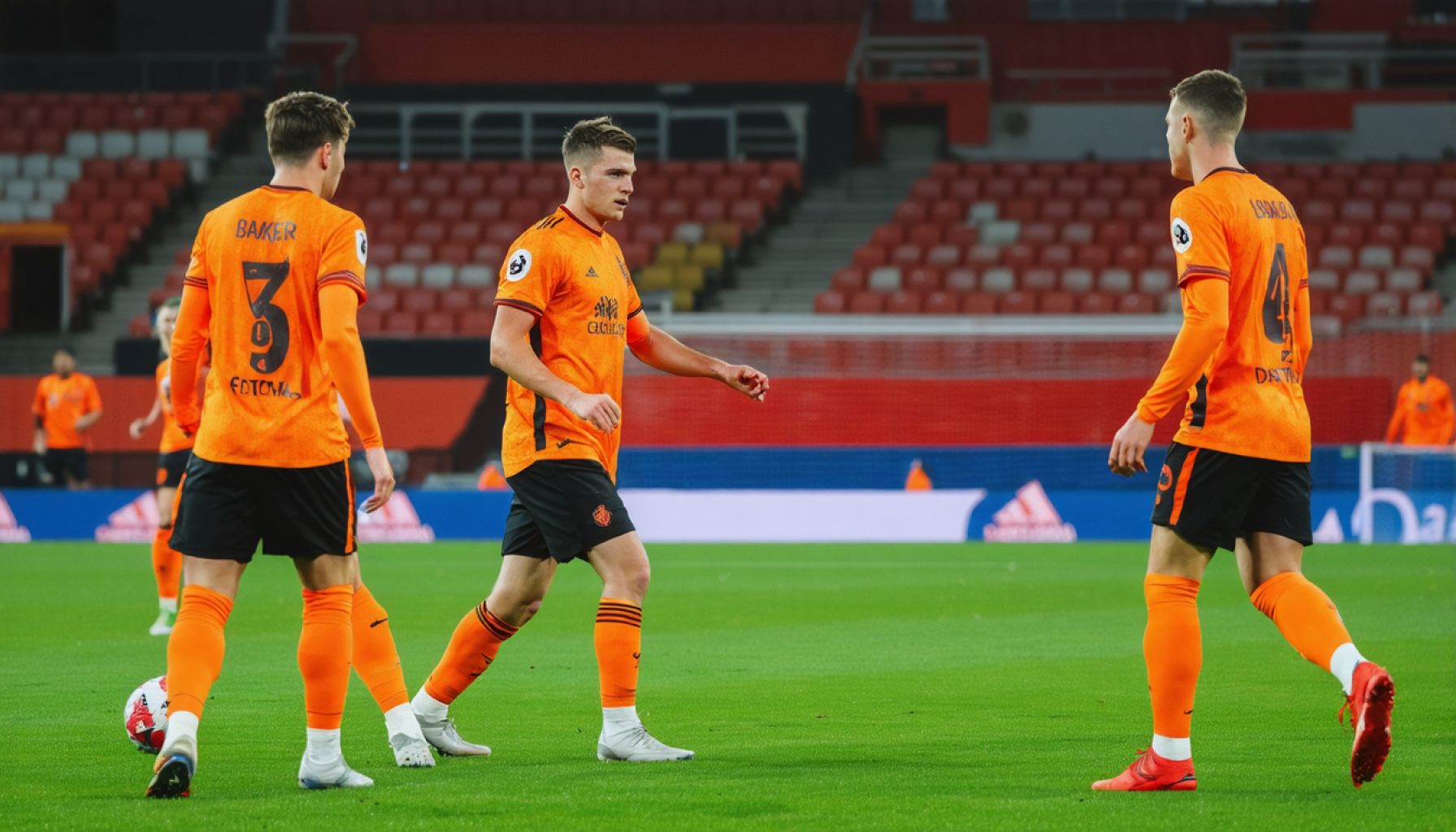- Manchester United targets 17-year-old Geovany Quenda from Portugal to enhance their offensive play.
- West Ham seeks to strengthen its defense with England’s 23-year-old center-back Taylor Harwood-Bellis.
- Real Madrid cautiously evaluates Everton’s Jarrad Branthwaite, priced at £62m, reflecting on fiscal strategies.
- Liverpool and Arsenal compete for 18-year-old Norwegian midfielder Sverre Nypan, highlighting his potential.
- Despite age, Luka Modric remains pivotal for Real Madrid, with a possible contract extension celebrating his experience.
- European clubs strategically balance young talent acquisitions with retaining seasoned players to secure their futures.
A wave of young talent churns through Europe’s football markets with the fervor of a rising tide, as clubs scramble to secure the stars of tomorrow. Under the floodlights of history-rich Old Trafford, Manchester United’s manager Ruben Amorim is keen to reinvigorate his squad. His eyes are set on Geovany Quenda, a promising 17-year-old winger from Portugal, famed for his electric pace and agility. Amorim believes Quenda’s flair could ignite United’s offensive play.
Not far away, West Ham has turned its compass southward, eyeing England’s Taylor Harwood-Bellis. The 23-year-old center-back, known for his commanding presence, seems poised for a pivotal role as the Hammers look to bolster their defensive ranks.
Meanwhile, in the opulent corridors of the Santiago Bernabéu, a cautious Real Madrid hesitates over Everton’s Jarrad Branthwaite. Pegged with a hefty price tag of £62m, the 22-year-old defender’s saga of suspense continues, straining Madrid’s fiscal resolve.
Across the Channel, whispers surround a potential bidding war for Sverre Nypan, an 18-year-old emerging from Norway’s fjords with a midfielder’s vision reminiscent of early Modric. Liverpool aims to snatch him from Arsenal’s grasp, betting on his nascent talent to pay dividends.
Beyond the vibrant pursuits of youth, wisdom holds its place. Luka Modric, the Croatian maestro who dances on the brink of 40, remains a cornerstone for Real Madrid. His potential contract renewal signifies a homage to consistency and the magic of experience.
In this lively exchange of youth and wisdom, clubs across Europe strategically sculpt their rosters, betting on the future while honoring the past. The game doesn’t rest, and neither do the dreams it weaves.
Unlock the Secrets Behind Europe’s Hottest Young Football Talents
Young Football Talents: How Clubs Are Sculpting the Teams of Tomorrow
European football is embroiled in a dynamic shift as clubs scramble to secure emerging young talents who promise to shape the future of the sport. Understanding how these clubs operate and what it takes to secure such promising players can offer insights into the future of football.
How-To Steps & Life Hacks
Scouting Emerging Talents:
1. Utilize Technology: Use scouting software and analytics to assess player performance metrics and potential growth.
2. Leverage Social Media: Follow young players’ presence on platforms like Instagram or Twitter to gauge public opinion and media buzz.
3. Network with Agents: Develop strong relationships with agents who manage young talents to get early access to potential signings.
4. Attend Youth Tournaments: Watch competitions like the UEFA European Under-17 Championship for emerging stars.
Real-World Use Cases
1. Manchester United & Geovany Quenda: Monitor how integrating young talent like Quenda can refresh a team’s offensive strategy through pace and agility on the field.
2. West Ham & Taylor Harwood-Bellis: Observe how reinforcing defensive capabilities is crucial for clubs seeking consistent league performance.
3. Liverpool & Sverre Nypan: Reflect on Liverpool’s strategic bidding to outmaneuver competition from Arsenal, highlighting the delicate art of negotiation.
Market Forecasts & Industry Trends
– Transfer Market Dynamics: According to KPMG Football Benchmark, player valuations and transfer market activities are expected to fluctuate due to post-pandemic fiscal adjustments and emerging trends in youth recruitment.
– Emergence of Data Analytics: Clubs increasingly rely on data-driven approaches to identify talent, emphasizing potential future value rather than just current abilities.
Reviews & Comparisons
Taylor Harwood-Bellis vs. Jarrad Branthwaite
– Harwood-Bellis: Known for leadership and aerial prowess, suitable for teams needing a strong presence at the back.
– Branthwaite: Offers versatility and technical skill but comes with a significant price tag, challenging clubs to weigh financial vs. strategic benefits.
Controversies & Limitations
– Financial Fair Play (FFP): Clubs must navigate UEFA’s FFP regulations when acquiring costly young stars, ensuring spending does not jeopardize club finances.
– Pressure on Young Players: Intense scrutiny and expectations can impede young players’ development, highlighting the need for supportive environments.
Features, Specs & Pricing
– Transfer Fees: High transfer costs, such as the £62m pondered for Branthwaite, indicate a competitive market where clubs must strategically allocate budgets.
– Contract Lengths: Long-term contracts are favored to secure young talent, offering stability while mitigating risk from competitors.
Security & Sustainability
– Sustainable Development: Clubs invest in academies and development programs to nurture homegrown talent, promoting sustainability and cost-efficiency.
– Talent Retention: Strategies include significant wages and career development opportunities to keep young stars committed.
Insights & Predictions
– Dual Pursuits: Balancing youth acquisitions with veteran consistency may define successful clubs. As seen with Modric and Real Madrid, experience proves invaluable.
Tutorials & Compatibility
– Integration Strategies: Seamlessly blend young players with seasoned veterans, focusing on mentorship and phased integration into the starting eleven.
Pros & Cons Overview
Pros:
– Increases team dynamism and future market value.
– Offers fresh tactical options and innovation.
Cons:
– Financial risks if players do not meet expectations.
– Logistical challenges in adapting to new leagues and styles.
Actionable Recommendations
– Focus on Development: Invest in dedicated coaching staff for personal development plans to maximize young players’ potential.
– Embrace Mixed Experience: Create balanced squads by combining the vigor of youth with the wisdom of experienced players for strong team dynamics.
Suggested Related Links
For more detailed insights, consider visiting football industry hubs such as UEFA or explore comprehensive analysis and trends from KPMG.
Leverage these strategies to be ahead in football management and player development, ensuring your club’s future remains as promising as the young talents it comprises.
